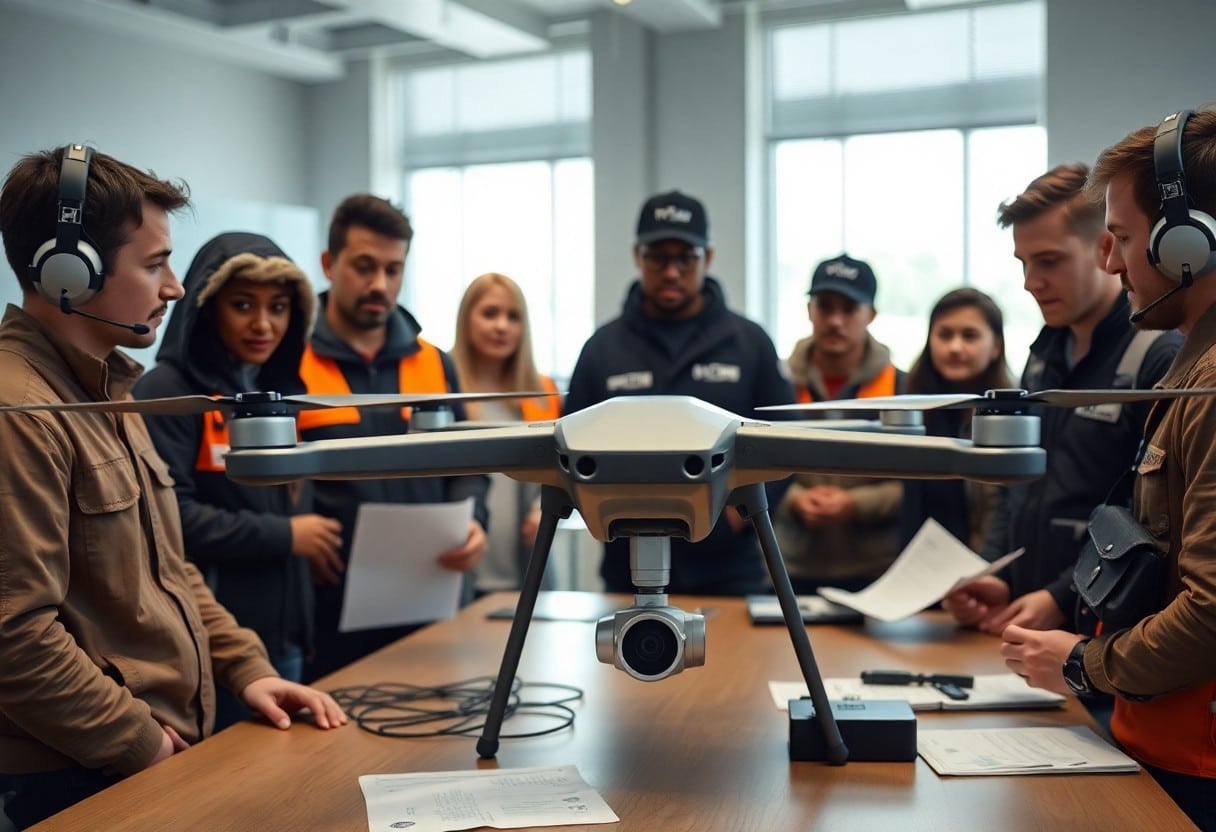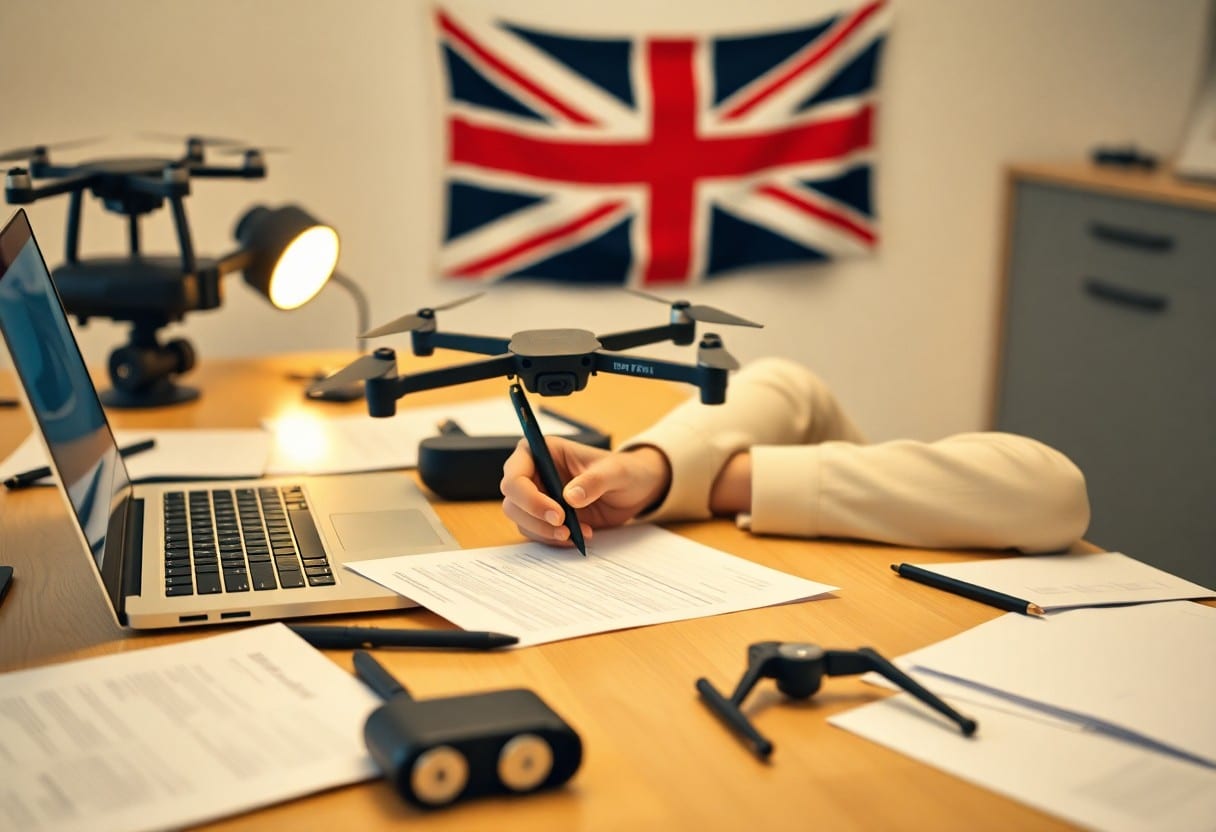Air Navigation Approvals - 5 Key Steps to Compliance in the UK
If you're planning a drone flight in the UK, find out about theObtained airborne flight authorizationThe program is very important. This article will introduce you to theSeven Key StepsTo help you ensure that you are following all legal and safety regulations. Mastering these steps will not only minimize legal risks, but will also enhance your flying experience and safety. Follow our guidance to make sure thatYour flight is in complianceThe
Key Points:
- Understanding regulations:Familiar with UK drone regulations and related requirements.
- Register your drone:Make sure your drone is registered with the appropriate organization.
- Apply for a flight permit:Requests for flight authorization are made according to mission requirements.
- Risk Assessment:Conduct a detailed risk assessment to ensure flight safety.
- Flight Plan:Develop a flight plan that balances safety and compliance.
- Ongoing training:Regular training and qualification of operators.
- Records and Feedback:Maintain detailed flight records and update compliance information in a timely manner.
Understanding airborne flight authorization
Before conducting any type of drone or aircraft operation, you need to fully understand that10 Basic Steps to Apply for a Drone Permit in the UKThe need to ensure that your operations are legal and safe. By obtaining the appropriate approvals, you not only avoid regulatory fines, but also enhance the professionalism and safety of your operations.
Definition and Importance
An air flight approval is a legal authorization for the flight of a drone or other aircraft in a specific area and under specific conditions. ThisTo ensure public safety and airspace managementIt is vital to avoid possible flying accidents or safety hazards.
Regulatory framework in the United Kingdom
The UK's air flight regulatory framework is governed byCivil Aviation Authority (CAA)It is responsible for setting the regulations that ensure the necessary safety standards for drone operations. You need to be aware of these regulations in order to fly within the law.
In the UK, you must comply with the regulations established by the CAA, including but not limited toRegistration requirements, operating permits and safety assessment proceduresThese regulations are designed to protect the legality and safety of flight operations. These regulations are designed to protect the legality and safety of flight operations. It is your responsibility to ensure that you have obtained the necessary approvals and documentation, and that you are fully aware of the conditions of the airspace in which you will be flying, before performing any flight operations. Being aware of these regulations will not only help you avoid legal disputes, but will also enhance your professional image and trust as an operator.
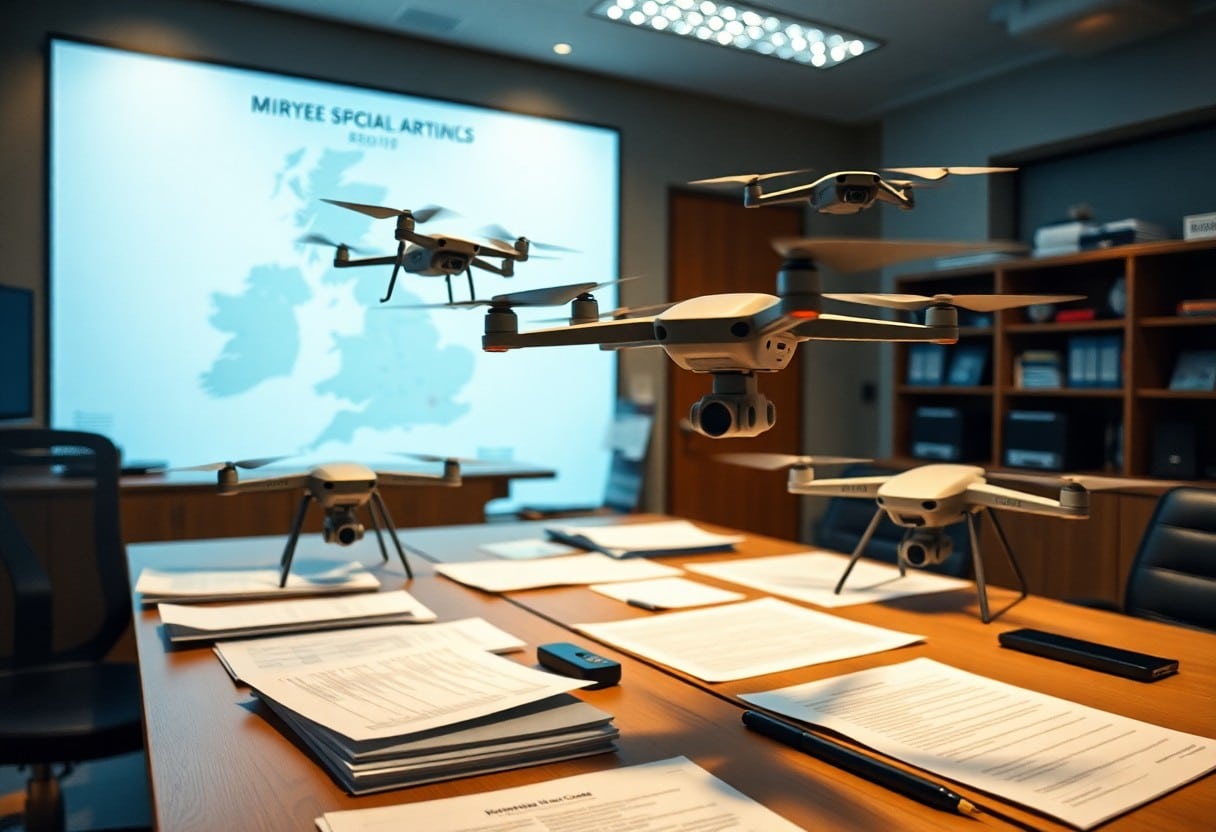
Step 1: Evaluate Your Airline Operations
Before conducting aviation operations, you need to have an in-depth understanding of your operational needs and risks. This assessment will help you identify applicable laws and regulations, while ensuring that your operations comply with local requirements. Conducting a thorough assessment not only enhances safety, but also reduces legal risks and potential financial liabilities.
Aviation Operation Type
Before you begin, you should understand the differentNavigating Drone Regulations - 8 Steps to a Successful License ApplicationThis will help you determine what permits are required and what regulations to follow. Here are some common types of aviation operations:
- Commercial Aerial Photography
- Private Entertainment
- Agricultural Spraying
- Search & Rescue
- Building Inspection
Recognizing your type of operation will help you develop a compliance program accordingly.
| Aviation Operation Type | License Requirements |
| Commercial Aerial Photography | Business License Required |
| Private Entertainment | General rules to be followed |
| Agricultural Spraying | Agricultural License Required |
| Search & Rescue | Special Permit on Demand |
Risk Assessment
proceedRisk AssessmentIt is an important step in ensuring the safety of your aviation operations. You need to identify and assess possible risks and develop corresponding mitigation measures. This includes understanding environmental conditions, interactions with personnel, and the condition of equipment.
existRisk AssessmentDuring the process, there are several key factors that require your special attention: first, assess the weather conditions and terrain of the flight area, whether your maneuvers will affect others or your surroundings, and the reliability and safety of your equipment. In addition, consider external factors such as crowds of people or other air traffic. Ensure thatRisk ManagementAdequate and effective strategies will be the key to the success of your aviation mission. Ultimately, risk is minimized to achieve the goal of safe operations.
Step 2: Obtain the necessary licenses
As part of the regulatory requirements, you will need to obtain the appropriate licenses to ensure compliance before you can fly. This covers not only the operation of the aircraft, but also your personal qualifications to operate it.
Type of license required
- Commercial Driving License (CPL)
- Private Driver's License (PPL)
- Drone Pilot's License (PfCO)
- Driver's Certificate of Competency (AOP)
- Air Medical Certificate
Knowing the correct license for your air operation is critical, as it directly affects your ability to legally fly and conduct business.
| License Type | descriptive |
| Commercial Driver's License (CPL) | Allows you to fly for commercial purposes. |
| Private Driver's License (PPL) | You are allowed to fly privately, but you cannot charge for it. |
| Pilot Flying Certificate (PfCO) | A license designed specifically for drone operations. |
| Driver's Certificate of Competency (AOP) | Further enhance your skill certification as a driver. |
| Air Medical Certificate | Make sure you meet health standards to fly safely. |
Application Process
The application process for obtaining a license can be complex and involves several steps, including completing an application form, providing the necessary proof of identity, and taking theoretical and practical tests. You will need to present a clear plan and follow the appropriate legal requirements. These systems are designed to ensure thatsafetyrespond in singingComplianceIn addition to the above, it is also important to prevent potential legal risks.
The application process usually involves submitting documents, paying the relevant fees and completing the necessary training. It is important that you understand each requirement in detail and ensure that you meet all the criteria. Checking the requirements for a specific license will help you better organize your actions, knowing that every step of the way you are ensuring the legality and safety of your flight. Remember, this is a critical step in obtaining legal flying privileges.
Step 3: Establish a Security Management System
Before you start an air flight, you need to establish a safety management system to ensure that all operations are in compliance with the law and that the flight is safe. This system should include a risk assessment and careful operational procedures to meet your needs.What are the key technologies for successful drone piloting?Request.
Creation Safety Code
Establishing effective safety protocols is key to protecting all those involved in the flight process. You should develop clear operating procedures and emergency plans based on risk assessments, and ensure that every team member is clear about their roles and responsibilities.
Training and competency requirements
Your team must meetTraining and competency requirementsThis is to ensure that they have the necessary skills to cope with a wide range of aviation operating situations. This involves regular skills assessments and continuing education to keep each member up-to-date with the latest knowledge and techniques.
In this regard, you should develop a clear training program that covers flight operations, risk management and emergency response. ExecutionProfessional TrainingIt enhances the competence of your team and strengthens your commitment to flight safety. Remember, continually updating and enhancing your training program is the key to ensuring flight safety.
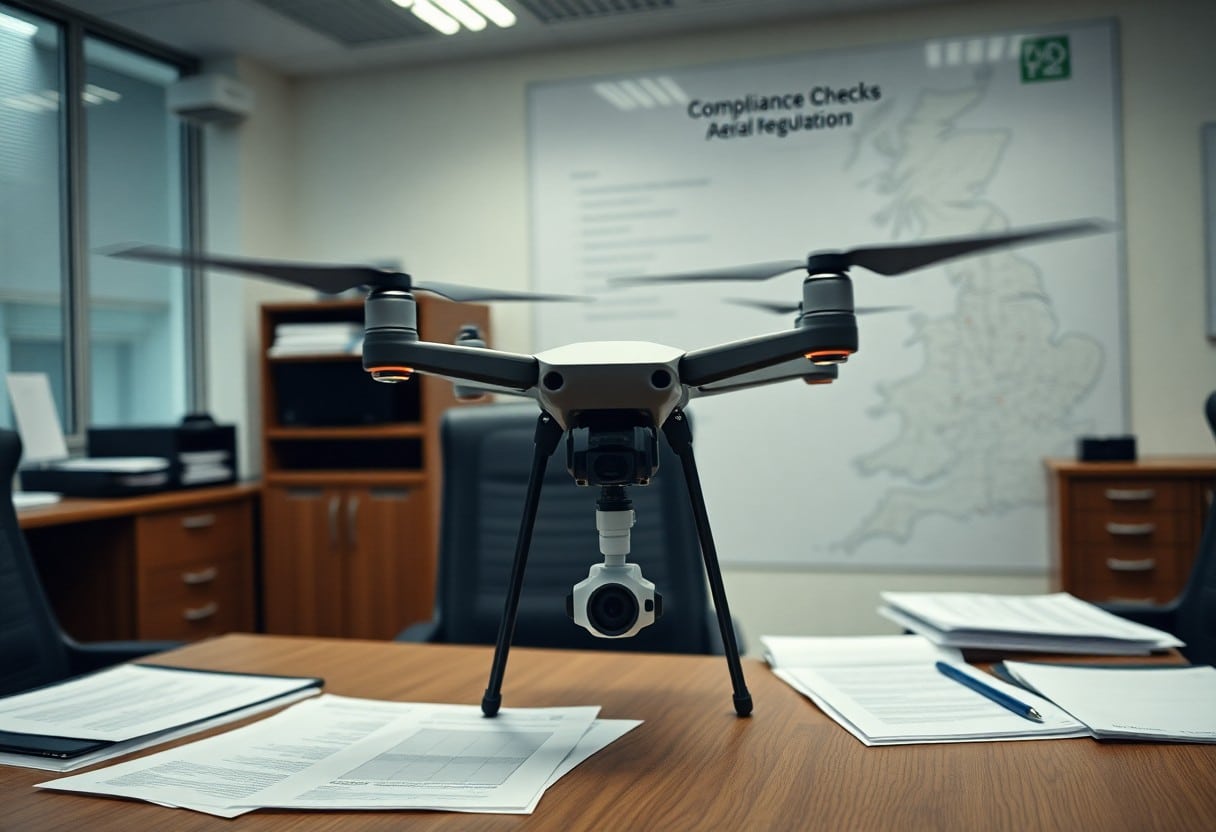
Step 4: Submit the Operation Plan
In this step, you will need to prepare and submit detailed operational plans to comply with UK aviation regulations. These plans must clearly show your flight objectives, routes and equipment to be used. Ensure that you follow all relevant regulations and consider the use of8 Powerful Steps to Improve Your Drone Photography Skillsto assist in the submission process.
Documentation of flight procedures
It is important to document the details of your flight procedures. You need to ensure that all operating procedures are understandable and can be audited if necessary. These documents should include risk assessments, operating procedures and emergency plans to ensure safety and compliance.
Approval Schedule
The approval process for each operational plan may vary, usually depending on the complexity of the plan and the risks it may face. After submission, theIt usually takes a few weeks.to conduct a review, so you should plan ahead to avoid the time pressure.
Once you have submitted your plan, please be patient and wait for the review results. Depending on the specifics of the planThe fastest approvals may take only a few days, but complex or high-risk programs can take months.To obtain final approval. Maintaining communication with the relevant authorities and keeping up-to-date with progress is critical to the success of your operational plan.
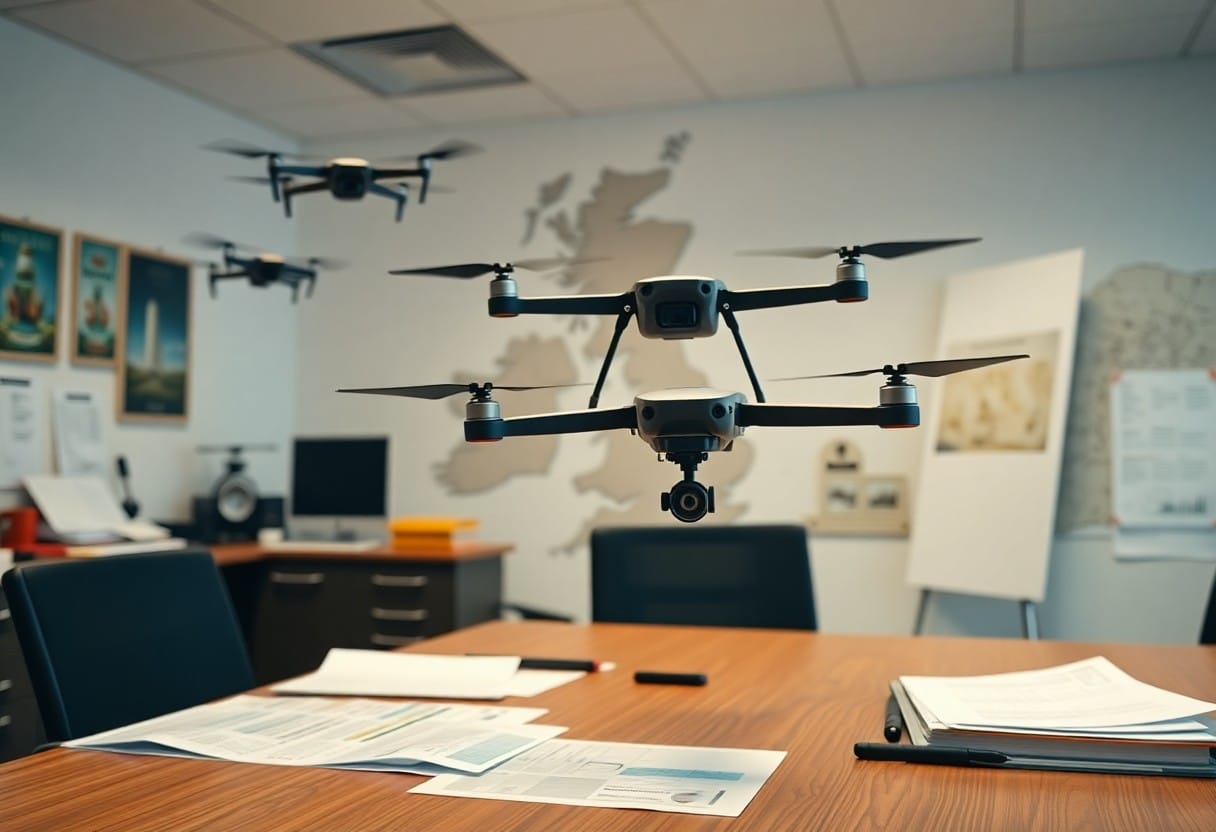
Step 5: Perform Pre-flight Inspection
Before each takeoff, you mustCareful pre-flight inspectionTo ensure that your voyage meets safety standards, you need to check that all systems and equipment are in good working order and that applicable regulations are being followed. This includes checking the working condition of all systems and equipment and ensuring that applicable regulations are followed. If you need additional information, seeSimplify Your Workflow - 7 Steps to Optimize Your 3D Modeling Softwareto learn more about the guidelines.
Checklist
To ensure a safe flight, you should develop a detailedChecklistThis includes all critical items such as mechanical integrity, fuel condition and electronic equipment function. This will help you maintain an efficient and consistent inspection program before each flight.
Maintenance Agreement
You should ensure that maintenance is performed regularly and on a timely basis in accordance with the manufacturer's recommendations and industry standards, and that records are maintained for future verification. ImplementationMaintenance AgreementWhen you are using your system, it is important to carry out detailed inspections and planned maintenance actions on a regular basis. You should ensure that these protocols include a wide range of inspection details and maintain good communication with your technical team so that potential problems can be addressed in a timely manner. Always keep a record of the results of each maintenance, which can improve future maintenance processes and enhance flight safety and reliability.
Air Navigation Approvals - Five Key Steps to UK Compliance
There are five key steps you need to follow to gain approval to fly in the UK to ensure you are operating in compliance with the relevant regulations. Firstly, you must understand and prepare the required documentation, followed by a risk assessment to ensure all safety measures are in place. It's also important to conduct appropriate training, obtain the necessary permits, and follow reporting procedures. Finally, regular inspection and maintenance of your equipment should not be overlooked.
Frequently Asked Questions (FAQ)
Q: What is the UK Air Navigation Approval?
A: Aerial Approvals are official permits that must be obtained before a drone flight can take place in the UK. These approvals ensure that flight operations comply with local aviation regulations and safety standards.
Q: What are the main steps I need to follow in order to obtain an air flight authorization?
A: The seven major steps to obtaining approval include: 1) identifying the flight area for the flight; 2) assessing the risks; 3) submitting a flight plan; 4) receiving training; 5) ensuring the equipment is up to standard; 6) conducting pre-flight inspections; and 7) submitting the results and reports.
Q: How should I conduct a risk assessment?
A: Risk assessment should take into account potential hazards in the flight environment, such as crowded areas, weather conditions and equipment failures, and develop countermeasures to address these risks.
Q: What information do I need to submit a flight plan?
A: When submitting a flight plan, you need to provide the time, location, objectives, equipment to be used and other relevant details to ensure the transparency and safety of the plan.
Q: How do I make sure my drone equipment is up to standard?
A: Ways to ensure that drone equipment is compliant include checking the technical specifications of the equipment, regular maintenance and servicing, and referring to the relevant legal codes to keep it in compliance.
Q: What should I pay attention to during the pre-flight check?
A: During the pre-flight inspection, the drone's battery condition, navigation system, camera functions and other critical components should be checked to ensure that all equipment is functioning properly and can be flown safely.
Q: How do I report a problem during a flight?
A: If a problem occurs during the flight, you should immediately record the relevant situation and data, and submit an incident report to the relevant organization as required after the flight for subsequent analysis and improvement.
